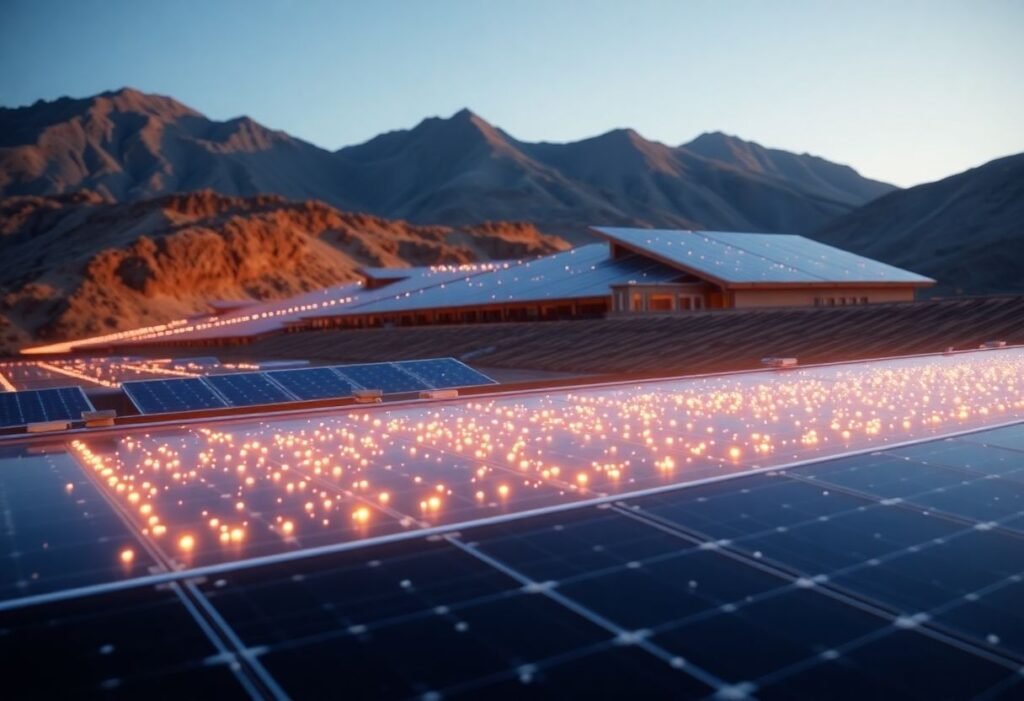Innovations in solar thermal energy systems are transforming how we harness the sun’s power. By leveraging cutting-edge technologies, these systems are making renewable energy more efficient and accessible, paving the way for a sustainable future.
Advancements in Heat Transfer Technologies
Efficient heat transfer is crucial in improving the performance of solar thermal energy systems. Recent innovations such as advanced heat exchangers and nanofluid technology enhance the efficiency of heat absorption and transfer. By utilizing nanostructured materials, researchers are achieving significant improvements in thermal conductivity, which leads to better overall system performance. These advancements not only increase energy yields but also reduce operational costs, making solar thermal systems more competitive with traditional energy sources.
Integration with Energy Storage Solutions
The integration of solar thermal systems with energy storage solutions represents a significant leap forward. Enhanced thermal storage technologies, such as phase change materials and molten salt systems, allow for the storage of excess thermal energy, which can then be used when sunlight is not available. This flexibility ensures a continuous energy supply, reducing reliance on fossil fuels and enhancing the stability of renewable energy sources. The ability to store energy efficiently addresses one of the most significant challenges in renewable energy implementation.
Smart Controls and Monitoring Systems
The rise of smart technologies has also influenced solar thermal energy systems. Implementing smart controllers and real-time monitoring can optimize energy output and improve maintenance practices. These systems can adjust parameters dynamically based on weather conditions, ensuring that the system operates at peak efficiency. Additionally, predictive maintenance can be employed to avert failures before they occur, leading to lower downtime and increased reliability of solar thermal energy systems. Such innovations not only enhance performance but also improve user experience.
Enhanced Materials for Longevity and Efficiency
The development of new materials plays a critical role in the advancement of solar thermal energy systems. Coatings that enhance reflectivity and reduce heat loss are becoming increasingly common. Moreover, materials that withstand high temperatures and environmental stresses ensure the longevity of solar collectors. Research into corrosion-resistant materials is also progressing, which extends the lifespan of installations in harsh climates. Ultimately, these innovations provide significant long-term cost benefits for users and encourage wider adoption of solar thermal technology.
Micro and Nanotechnology in Solar Collectors
Micro and nanotechnology innovations have made their way into the design of solar thermal collectors. By manipulating materials at the microscopic level, engineers have created more efficient absorbers that maximize solar energy capture while minimizing material usage. These advanced collectors are also lighter and more adaptable to different installation environments, making solar thermal energy systems more versatile. The incorporation of these technologies exemplifies how precision engineering can lead to significant improvements in renewable energy efficiency.
Future Trends and Market Perspectives
As the global push toward sustainable energy sources continues, the market for solar thermal energy systems is likely to expand rapidly. Emerging trends show increasing interest in hybrid systems that combine solar thermal with solar photovoltaic technologies. Furthermore, government incentives and increased consumer awareness are driving innovation in this field. The forecast for solar thermal energy systems is bright, with continued investments expected in research and development, which will unlock new opportunities for innovation and efficiency.
Disclaimer: This article reflects the author’s views and is not intended to substitute for professional advice.





















